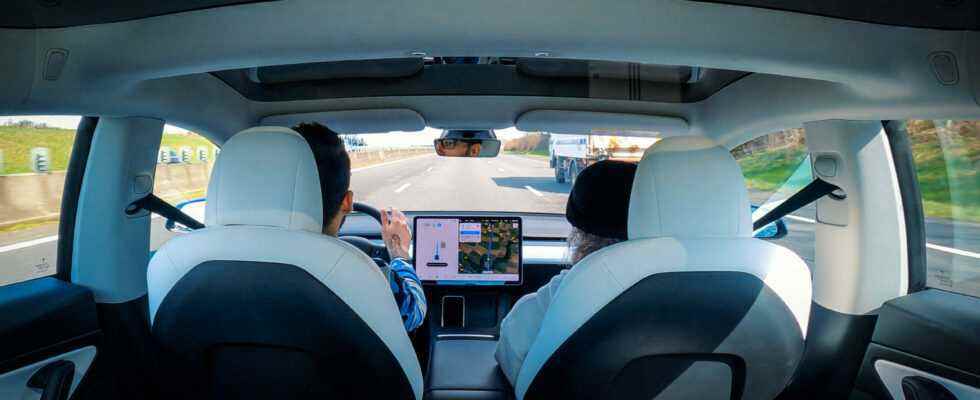The number of complaints continues to grow against Tesla for phantom braking. The American highway safety authorities (NHTSA) have requested a response from Tesla by June 20, 2022, with all the technical documents related to this problem.
After receiving 354 owner complaints, US authorities began investigating a Tesla phantom brake issue in February. Today, more than 750 owners have reported this problem. The NHTSA (National Highway Traffic Safety Administration) has not received any of the elements requested from the manufacturer, reports the Associated Press on June 3, 2022. The latter must however respond to this request before June 20.
This isn’t the first time that Tesla has been caught up in autopilot phantom braking issues. Tesla’s remote system updates usually alleviate these issues, before they sometimes reappear with another system update. Beyond the software management of the problem, does Tesla really have the means to remove these sudden brakings which can become sources of accidents? This is what the American authorities wish to verify through their investigation.
Have access to the data of the offending vehicles
In the letter sent to Tesla on May 4, the American authorities ask the manufacturer to provide several information relating to these incidents of the autopilot. The vehicles targeted are essentially the Tesla Model 3 and Model Y from 2021 and 2022, which represents 416,000 vehicles on the road in the USA. The problem is not limited to vehicles from this country, since it is not uncommon to come across stories and questions about these phantom brakes on Tesla owners’ groups. Writing Numerama, we have already had the opportunity to experience these sudden braking on fast lanes, which seem unjustified, and which could have led to an accident without rapid recovery of the acceleration controls.
Among other things, the NHTSA asks for the initial speed at which the cars began to brake, the final speed and the average deceleration. She also wants to know if the automated systems have detected an obstacle and if Tesla has a video of the braking incidents to be able to analyze the information.
NHTSA also wants information from Tesla about on-board sensors, internal testing or investigations of braking issues, or any changes to the system. The authorities are also interested in the way in which the system manages changes in luminosity (reflections, shadows, glare, rain, etc.).
Tesla is known to have access to a lot of information reported directly by vehicles in circulation. The authorities wish, beyond the internal investigations carried out by the brand, to also be able to verify the data available to the manufacturer to shed light on this problem.
Concerns for Full Self-Driving (FSD)
While Elon Musk has just announced that it will extend its semi-autonomous driving program to nearly 100,000 vehicles on the American continent, the NHTSA fears that the number of accidents involving Tesla will increase.
The authorities want to know if some of the accidents, sometimes fatal, that took place were with the FSD activated, or only the autopilot. This could put a stop to Tesla’s experiments in this area, while the manufacturer is moving quickly to advance its system and deploy it on a larger scale.
We know that Elon Musk does not take kindly to NHTSA’s requests, but if the brand can ask for additional time to provide the requested elements, Tesla will not be able to kick in the sidelines indefinitely. Tesla has often been praised as offering the safest models, but this image is now somewhat tarnished by this recurring braking problem, which the brand seems to be struggling to permanently eliminate.
